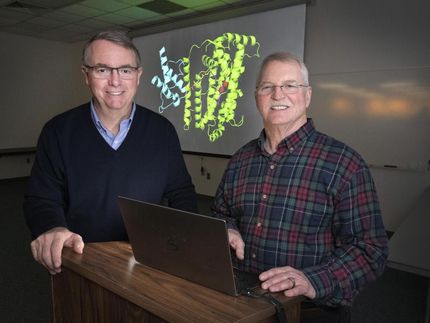'Invisible' protein structure explains the power of enzymes
A research group at Umeå University in Sweden has managed to capture and describe a protein structure that, until now, has been impossible to study. The discovery lays the base for developing designed enzymes as catalysts to new chemical reactions for instance in biotechnological applications. The result of the study is published in the journal Nature Communications.
Enzymes are extraordinary biocatalysts able to speed up the cellular, chemical reactions several million times. This increase of speed is completely necessary for all biological life, which would otherwise be limited by the slow nature of vital chemical reactions. Now, a research group at the Department of Chemistry has discovered a new aspect in enzymes that, in part, explains how enzymes manage their tasks with unmatched efficiency and selectivity.
So-called high-energy states in enzymes are regarded as necessary for catalysing of chemical reactions. A high-energy level is a protein structure only occurring temporarily and for a short period of time; and these factors collaborate until its state becomes invisible to traditional spectroscopic techniques. The Umeå researchers have managed to find a way to maintain a high-energy state in the enzyme, adenylate kinase, by mutating the protein.
"Thanks to this enrichment, we have been able to study both structure and dynamics of this state. The study shows that enzymatic high-energy states are necessary for chemical catalysis," says Magnus Wolf-Watz, research group leader at the Department of Chemistry.
The study also indicates a possibility to fine-tune the dynamics of an enzyme and this possibility can be useful for researchers in developing new enzymes for catalysis of new chemical reactions.
"Research on Bioenergy is an active field at Umeå University. An important, practical application of the new knowledge can be enzymatic digestion of useful molecules from wooden raw materials," says Magnus Wolf-Watz.
The discovery has been made possible thanks to a broad scientific approach where numerous advanced biophysical techniques have been used; Nuclear Magnetic Resonance (NMR) and x-ray crystallography being the main techniques.
"One of the strengths of Umeå University is the open cooperative climate with low or no barriers between research groups. It means that exciting research can be conducted in the borderland of differing expertise," says Magnus Wolf-Watz.
Original publication
Other news from the department science

Get the chemical industry in your inbox
By submitting this form you agree that LUMITOS AG will send you the newsletter(s) selected above by email. Your data will not be passed on to third parties. Your data will be stored and processed in accordance with our data protection regulations. LUMITOS may contact you by email for the purpose of advertising or market and opinion surveys. You can revoke your consent at any time without giving reasons to LUMITOS AG, Ernst-Augustin-Str. 2, 12489 Berlin, Germany or by e-mail at revoke@lumitos.com with effect for the future. In addition, each email contains a link to unsubscribe from the corresponding newsletter.




























































